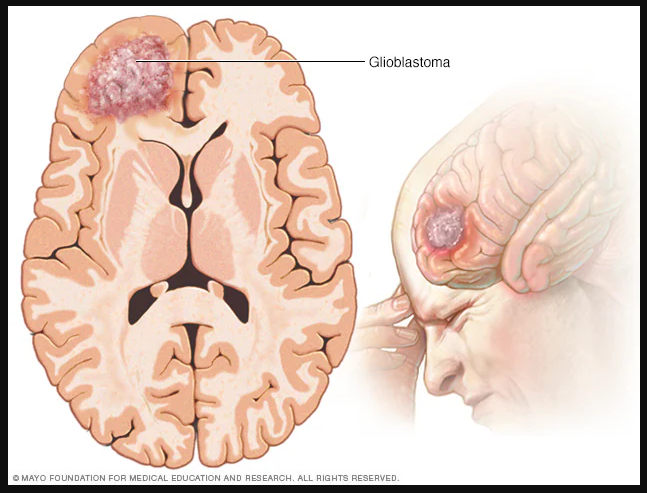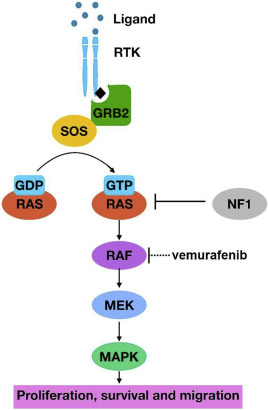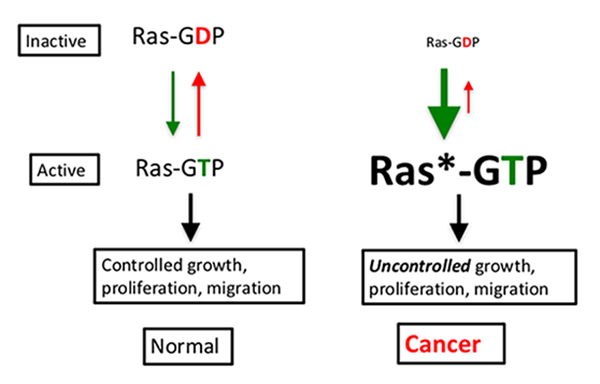
Glioblastoma is a type of brain tumor; glio means ‘from glial cells’ which are cells that support neuronal cells in the brain, and blastoma means ‘a form of tumor.’ Glioblastoma is a very deadly form of cancerous tumor because of how fast it grows, how resistant it is to treatment, how invasive it is, and the fact that it is located in the brain, one of the most essential organs in the body. Patients with glioblastoma experience common symptoms with neurological disease and brain injury, for example, headache, seizures, nausea, personality changes, drowsiness, etc.
Now we know what a glioblastoma is, let us learn about how the cancer works and what makes the tumor grow so fast. In normal cells, there are multiple cellular signaling pathways that will signal to the cell that it needs to grow and divide. The major ones to focus on, for glioblastomas, are cAMP, MAPK, and PI3K pathways. Looking at the set of figures below that outline each of these pathways, we can see that the structure of these pathways is not so different from one another. They all involve signals coming from outside of the cell, in the extracellular space; the signals join with a receptor on the membrane whether that be a GPCR like in the cAMP or RTKs in the PI3K and MAPK pathways. Yes, all of these pathways are their own individual pathways, but there are key points and proteins where they converge. Convergence is when a protein or system is used in two or more pathways, so it is conserved. This makes it an attractive target for drugs because a drug could more efficiently impact multiple pathways.
A B


C

Figure 1: Collection of signaling pathways that lead to cell growth, A the cAMP pathway which is named after the key second messenger cAMP. B the MAPK pathway which refers to the protein MAPK which is a key step in the pathway whether it goes from a cellular signal to a change in gene expression. C the PI3K pathway which is named after the PI3K complex of two proteins p85 and p110.
One convergent protein between MAPK and PI3K is Ras. The Ras protein is a g-protein which binds to GTP, a molecule that can give proteins and other molecules the energy to function. The Ras + GTP will then go and activate more proteins in both the MAPK and PI3K pathways. Ras has been identified as a convergent target by many scientists, and the National Cancer Institute (NCI) has started a Ras initiative which will focus research and funding on learning more about Ras and how to target it with drugs and cancer treatments. When Ras does not work correctly, cells can divide and grow too fast and become cancerous. 30% of cancers can be traced back to a malfunction with the Ras protein.


Ras is just one of these proteins that is conserved across signaling pathways. Like was aforementioned, these proteins are very attractive treatment options for cancer. However, like most cancer treatments, these proteins and pathways are necessary in all cells, so if they were to be shut off that would negatively impact all cells in the body, just like in chemotherapy.
References:
